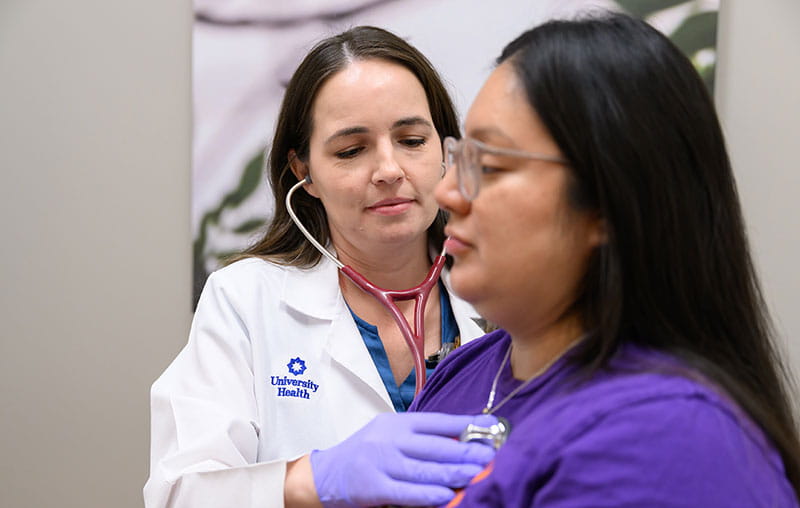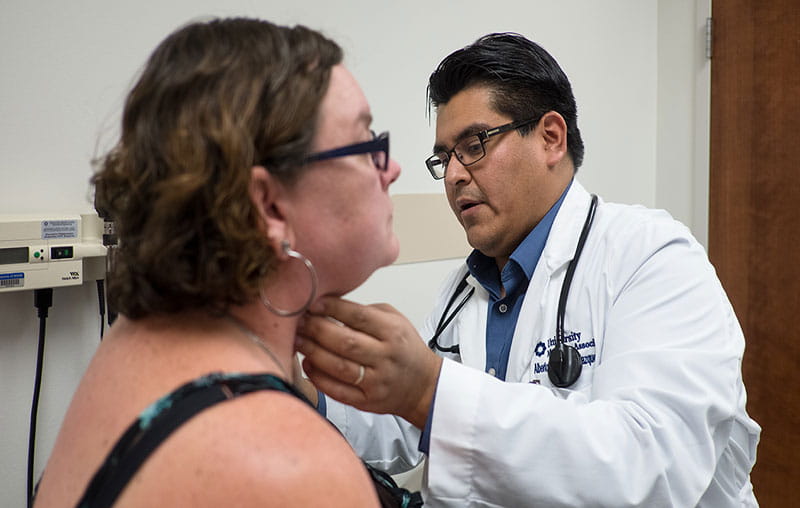Whether you’re a new mom or a seasoned vet, breastfeeding comes with its own set of unique challenges. From difficulties with baby latching to painful nipples, breastfeeding can feel overwhelming at times.
Here are more breastfeeding tips, tricks and fast facts from Deborah Persyn, an RN and certified lactation consultant at University Health.
Benefits of Breastfeeding
Breastfeeding has a ton of benefits for both mom and baby.
For Mom:
- Helps you lose baby weight
- Lowers your risk for breast cancer, uterine cancer and ovarian cancer
- Helps you bond with your newborn
- It’s free!
For Baby:
- Lowers their risk for types 1 and 2 diabetes
- Lowers their risk for some childhood cancers
- Can raise their IQ
- Lowers their risk for asthma and allergies
- Lowers their risk for obesity
- Gives baby control of feedings
Breastfeeding Tips
1. If you’re having trouble breastfeeding, see a lactation consultant.
First and foremost, if you’re having trouble breastfeeding, it helps to get assistance from a professional. Lactation consultants can help with:
- Improving baby’s latch and positioning of baby
- Hand expression of the breast
- Breast pumping
- Relactation/inducing lactation
“Lactation consultants can help determine what's going on with baby latching, if you’re having pain at the breast, is it a positional thing, or does baby have a tongue or lip tie, which also can cause some women to have pain with breastfeeding,” Persyn said.
2. Sore nipples are common but treatable.
Poor latch, tongue-tie and infection can cause nipple pain and soreness. You can ease the pain using nipple cream or a heating pad, and keeping soaps away from your nipples. Try repositioning your baby during feeding so they aren’t pulling down on your nipple.
3. Don’t pump right after breastfeeding.
Lactation consultants don’t recommended pumping after a breastfeeding session unless your baby is receiving some sort of supplementation or isn’t latching.
“A lot of moms are told to pump after baby breastfeeds. But you don’t want to pump because you're setting yourself up for a breast infection,” Persyn said. “You're telling your body, we've got a real baby, and we've got a pump baby.”
4. Right after birth, your baby’s belly is the size of a teaspoon.
The first milk you’ll produce is called colostrum. It’s a thick, heavily concentrated milk that you’ll start producing about halfway through your pregnancy and for the first few days after giving birth. If you’re not producing very much of it, don’t worry! Your baby doesn’t need to eat much for the first day or so.
“Baby does not need to be peeing and pooping tons in the beginning,” Persyn said. “This can really be helpful for moms to realize and to know that the little bit they have is normal, and that's all baby needs.”
Use this breastfeeding and diaper chart to track your baby’s daily feedings.
5. Try hand expression.
Hand expression means using your hands and fingertips to massage your breast to encourage milk production.
“Having mom do the hand expression to remove some of those drops to let baby taste it can help babies get through that initial challenge of latching directly,” Persyn said.
6. Breastfeeding immediately after giving birth lowers your risk for hemorrhage.
“When moms are breastfeeding, their bodies release oxytocin, which produces contractions in the uterus to help it contract back to its original size,” Persyn said. “If breastfeeding or pumping is initiated within that first hour, it really does help prevent postpartum hemorrhage.”
Attend a University Health Breastfeeding Class
Register for an online breastfeeding class at University Health, led by a certified lactation consultant. Learn about topics like:
- Why should you breastfeed?
- Getting ready to breastfeed
- First feedings
- The first week at home
These online classes are 90 minutes long and are currently only available in English.




